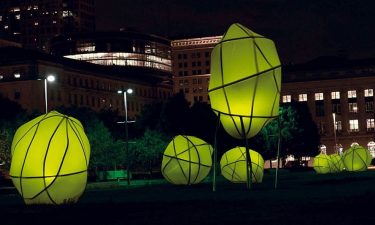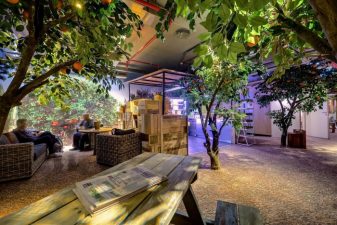 Doha-based architect Romi Sebastian questions the feasibility of Qatar’s urban planning ahead of the 2022 World Cup
Doha-based architect Romi Sebastian questions the feasibility of Qatar’s urban planning ahead of the 2022 World Cup
Qatar is moving rapidly towards its vision to host the world cup in 2022. Yet if scrutinised, current progress in urban infrastructure and architecture seems to be frail in terms of character and functional approach. Is the idea of developing an ‘instant city’ going to be a harmful one? Are designs being developed on the burden of unnecessary stylistic demands? Will the city planners commit to making the same mistakes made in the other developed cities in the Middle East region?
Architecture here is already being needlessly influenced by predominantly western concepts. One should not forget that most of the iconic designs are developed by expatriates who don’t understand that cities in the Middle East lack a public realm. The skyline of the west-bay area already resembles Sheikh Zayed road in Dubai.
Acceptance of one’s cultural backdrop
As an architect, I often wonder why there is a perception that any element of existing heritage of Qatar— be it cultural or spiritual — is always identified with the past, backwardness and poverty; while the image of “development” or “progress” is always borrowed from elsewhere?
For instance, why is glass considered to be a material that denotes ‘progress’ whereas traditional and practical materials like clay and limestone are often related to backwardness and poverty? This impractical dissociation between materials and the environmental context of a region causes a slow degradation of the local architectural expression.
This advocates methods of tweaking ideas from one cultural context and illogically pasting them into another. Prospective business tenants in Doha have become aware that dramatically curved or angled glazed walls within exotic building shells can hike the cost of fitting out an office by 15-20 per cent.
In this part of the world, where methods of keeping the heat out and preventing its transfer are required, architects instead celebrate with glass. Each glass tower, built taller than the other – becomes unexpectedly meaningless, rendering any discussion of architecture irrelevant.
Logical Planning
In a country where the population of locals and expatriates is rising and in parallel multiple numbers of vehicles, Doha’s road networks are still being planned on a more old-fashioned British-like system that consists of 3-4 lane networks and small roundabouts. And traffic police seem to still require resources, training and maturity in terms of traffic monitoring, i.e. maintaining social control and driving discipline.
Dedicated lanes, bus-stops and other suitable provisions for public transport are still being ignored. This overall deficiency in urban foresight will not be able to manage the increasing volume of traffic in the coming years. Wider lanes and interchanges are an immediate requirement in Doha.
Even today, there are no proper provisions in place for the mobility of emergency vehicles. And vehicle parking is already an intrinsic problem. For instance, in a developing area like West Bay – every Doha resident has experienced the havoc of trying to access the City Centre Mall and find a parking space even during weekdays.
Traffic
Proper road grading and storm-water drainage systems are still being overlooked in the assumption that Qatar receives very little rainfall annually. Most residents are aware of havoc caused last year due to blocked roads and flooded roundabouts following sudden downpours. Saudi residents will not forget the aftermaths of rains that took place in Jeddah a few years back.
Construction managers have blindly prepared new road construction plans/strategies without taking into account efficient diversions for current and future traffic volumes. In the coming years, the roads in Doha are going to be inevitably jam-packed with vehicles and residents will be frustrated with road blocks due to inefficient road construction planning.
I’m forced to question the content and feasibility of the current Master Plan devised for Doha, as the few remaining empty plots located within the busiest/crowded areas in Doha are still being built-upon(e.g. Najma, Mansoora, Muntazah). Common sense says that such empty plots should be utilized for enabling vehicle parking and also providing breathing spaces, green parks and breakpoints for pedestrians.
People are forced to be drivers, not pedestrians. Low-income workers have desperately adopted settling on small grass areas between roads as these happen to be the only areas available for informal meetings. The creation of architectural wonders in Doha will not overshadow the city’s poor urban planning.
All future developments must be moved to the outer parts of Doha so that volumes of traffic and people settlements are distributed evenly through the country. Creation of multiple ‘Doha-like’ satellite townships with highway access should be the primary aim rather than building dense infrastructure and buildings in and around the already congested parts of the city.
The buoyant future
It is not as though Doha doesn’t know how to make good cities. Its old downtown, located along the creekside and hearkening the emirate’s fishing village and trading post origins, is a charmer with old marketplaces or souks.
Here are age-old lessons of walkable streets, mixed uses and the use of aged buildings that form still-relevant models for planning cities. The trouble is that these models are being trampled upon in the rush to create the car-oriented city of office parks and commercial strips that is going to be stretched for mile after mile.
Overall, Doha should not be focused on just building up infrastructure to support a world cup. This hasty, spur-of-the-moment approach to get things accomplished is not going to benefit the country or its residents in anyway.
Lessons should be learnt from case-studying city plans of already developed cities like Dubai & Abu Dhabi. The engineering arena should convince the elite that the future of Doha desperately lies in logical design for the benefit of the residents, controlled urban growth, efficient use of per-capita income, value-engineering and acceptance of one’s cultural setting.
Romi Sebastian is based in Doha.
Skyline from Shutterstock
More on the 2022 World Cup in Qatar:
“The Showcase” is a Mini Prototype Stadium for Qatar’s 2022 World Cup
Qatar Accused of Bribing Their Way to the 2022 World Cup
SLIDESHOW: Entries for Qatar’s 2022 World Cup Stadiums



